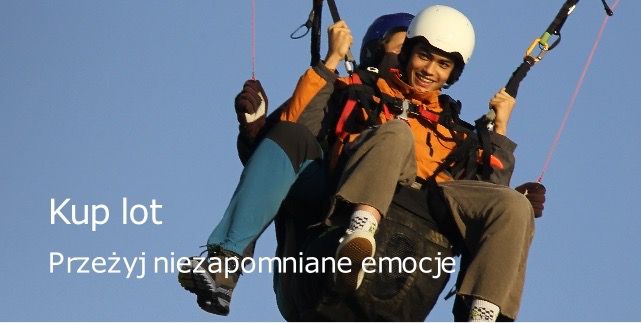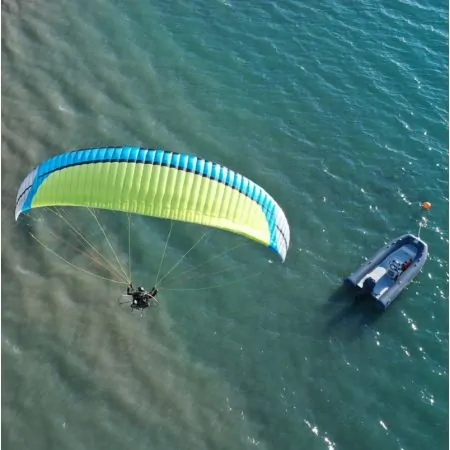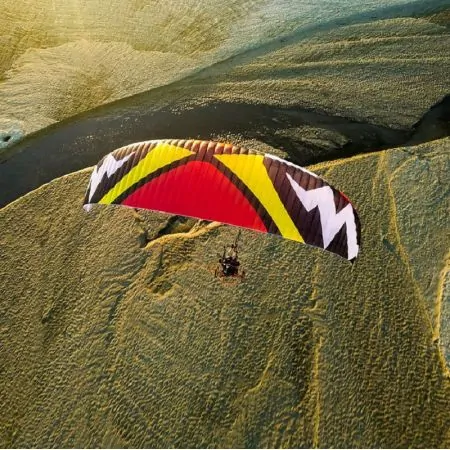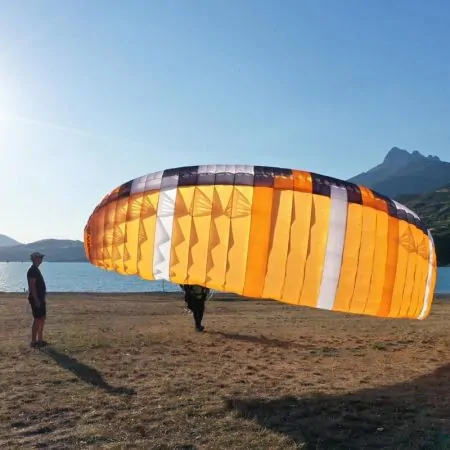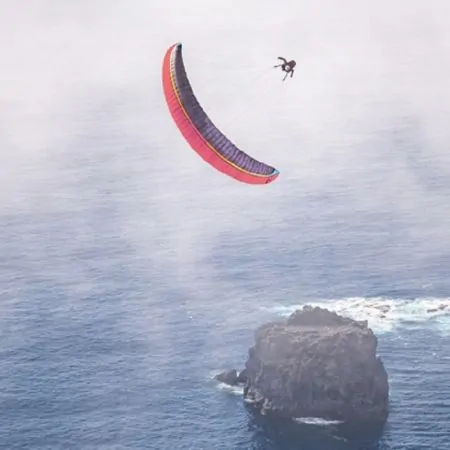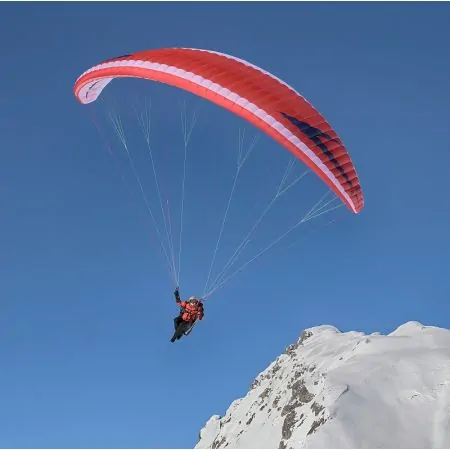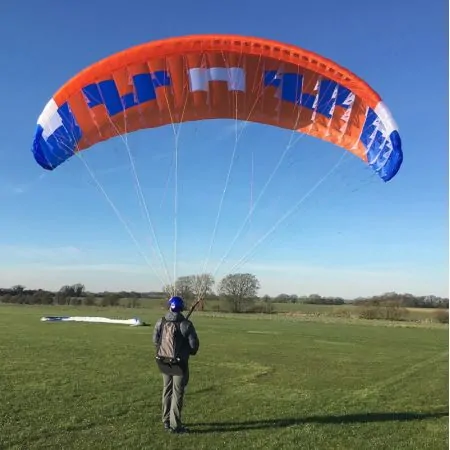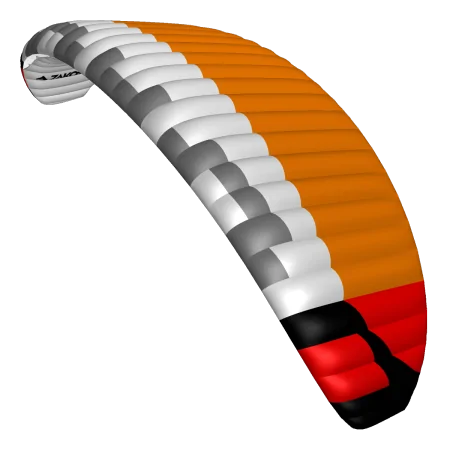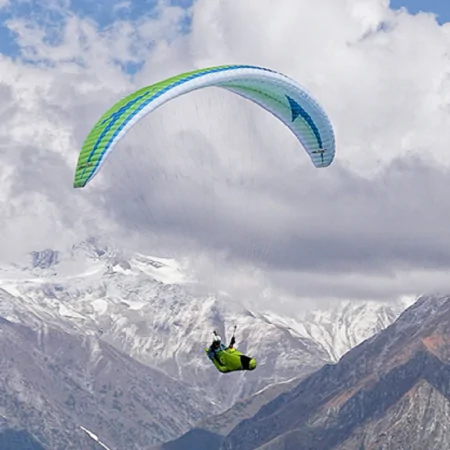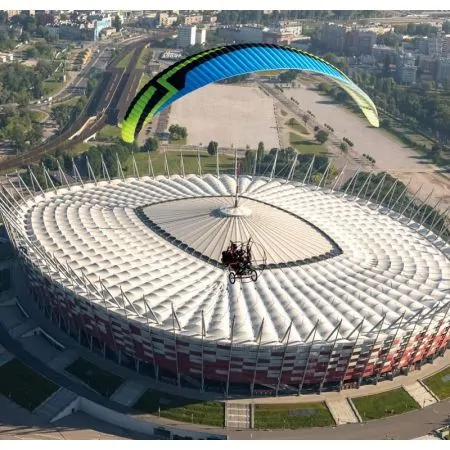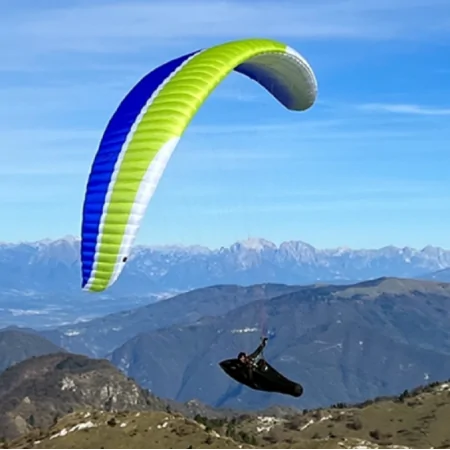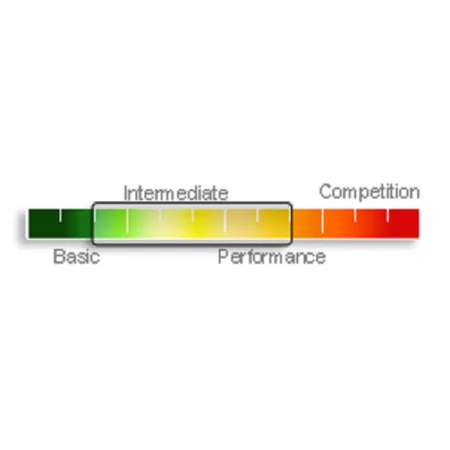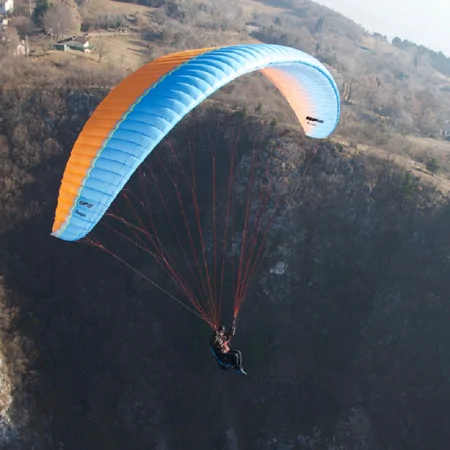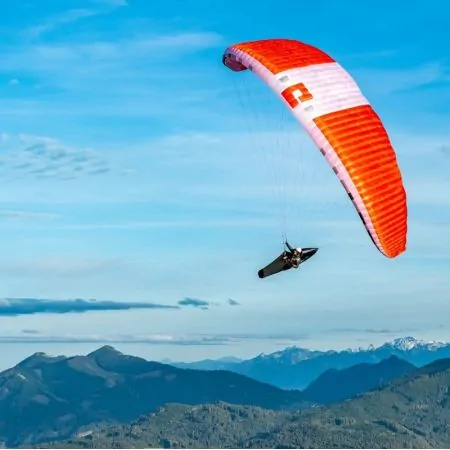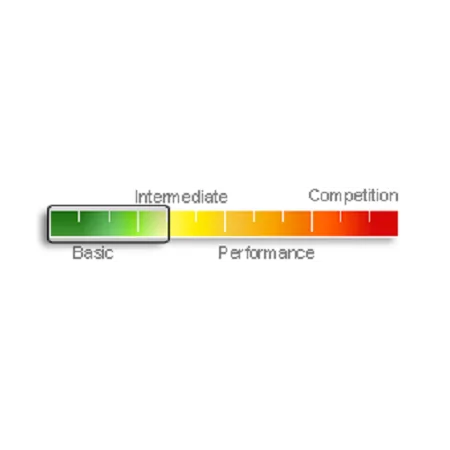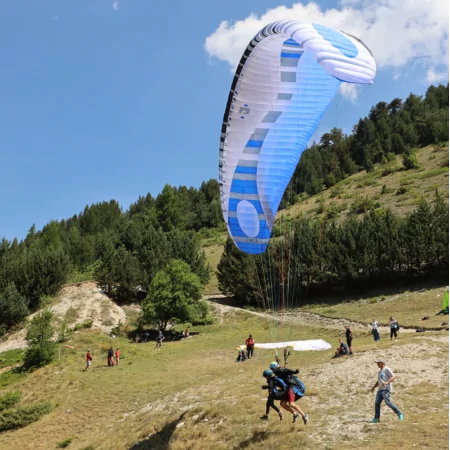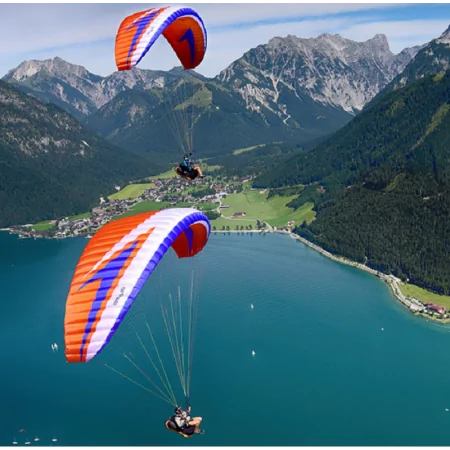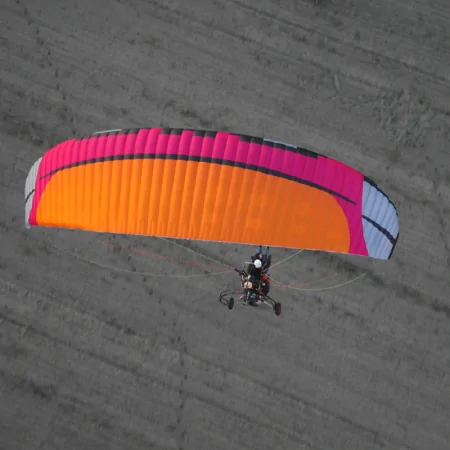Landing
During landing approach, a relatively small pullon the brakes is enough to significantly reduce the speed and land gently.
Solo and its “classmates”
The question arises about the differences between Solo and similar wings in this segment – the Universal 1.1 or the no longer produced Synthesis 2. In a nutshell, it can be said that Solo is a little more advanced when it comes to flight parameters due to its slightly greater aspect ratio (5.4, as compared to 5.1 in Universal and Synthesis), yet at the same time it is easier to use.
However, its “genes” come more from the Orca side, in particular the Cabrio, a fact emphasized by the same graphic design (with a modified color system).
Compared to Synthesis, Solo gets up and launches easier. In flight, its canopy is a bit softer, so that controls are lighter, and pilot can get a better feel of the air when thermalling. It is also more economical and has wider take-off weight ranges.
The Universal is, according to its name, more universal, while Solo is a pleasant, thoroughbred paramotor wing for intermediate pilots looking for uncomplicated wings for fun and cross-country flying. The Solo has a shorter trimmers than Universal, and risers are easier to operate.
Design
The canopy has been designed in our CSG system (Canopy Shape Guard), which consists of several subsystems guaranteeing exceptional coherence of the canopy shape and its extended durability.
Adjustable reflex airfoil of the paraglider is based on our flagship DRA concept (Dudek Reflex Airfoil), duly optimized using special CFD software.
The intakes of Shark-nose technology
The Solo is made with the Flexi-Egde technology – the precise shape of the leading edge is kept with laminated cloth reinforcements, incorporating synthetic rods. These rods considerably improve launch quality, as well as keep deformations away at high speeds.
Careful selection of modern fabrics and design solutions brings about maximum reliability, strength and durability. All materials come from numbered production batches, and each production step can be verified down to identification of specific worker and controller.
The Solo is manufactured in technology utilizing precision of the laser cutter. All stages of production process take place in Poland under strict supervision of the designer himself, thus ensuring highest European quality.
TECHNICAL DETAILS:

* Speeds are given as estimated for the middle wing size and the middle of its weight range. These speeds can vary within +/- 3 km / h depending on the size, take-off weight and additional factors such as air pressure and temperature.
** The basic rule is to choose the size of the wing so that the take-off weight is in the middle of the weight range. Less weight on the wing (lower range take-off weight) can be considered for foot take-off, when flying in calmer conditions, or when we want to improve economy. More experienced pilots who want to fly dynamically, have higher speed and fly in more demanding wind conditions can consider greater wing loading (take-off weight in the upper range). This is a common option among trike users.
*** Note – the canopy significantly changes its behavior with increasing wing loading. The greater the loads, the greater skill and concentration of the pilot are required.



